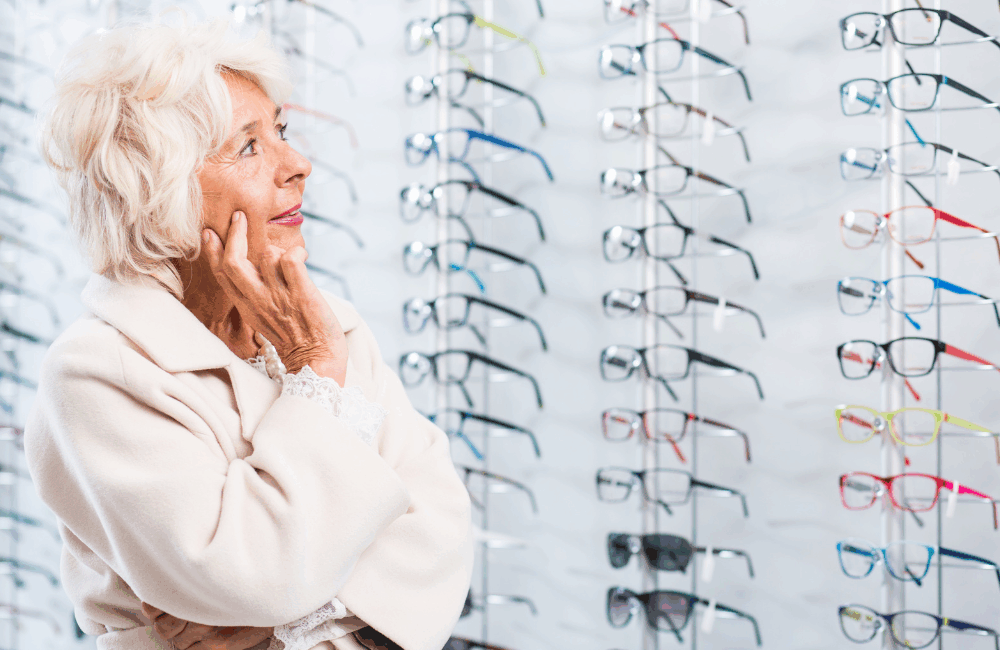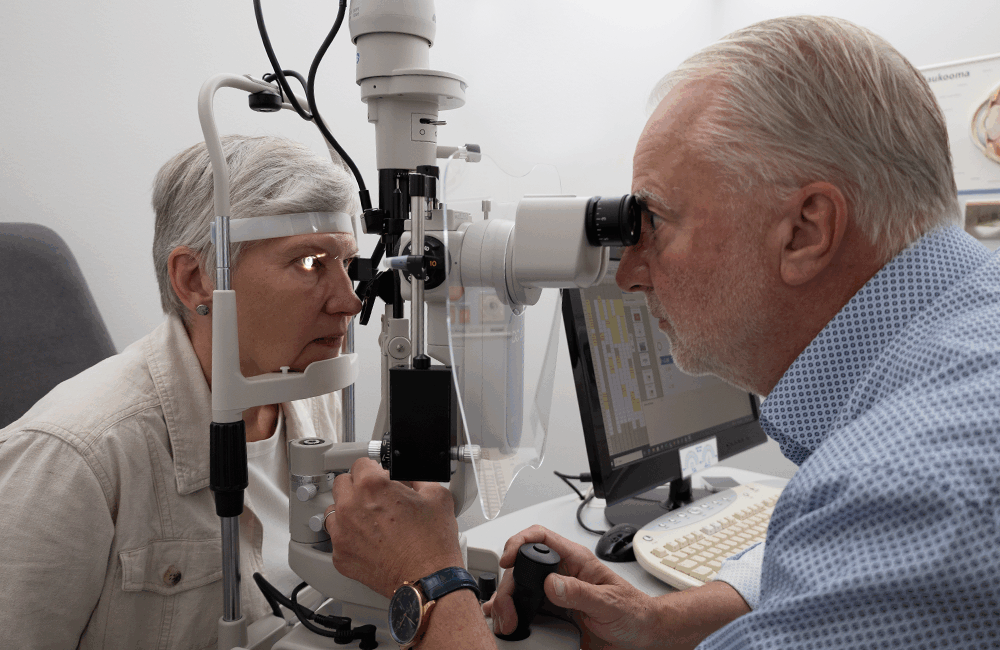
In 2024, the total market for vision and eye care grew significantly. Total turnover in the sector rose to €581.6 million, representing a 6.3% increase on the previous year. The growth was strongest in ophthalmologists` reception services, while retail and wholesale trade grew at a slightly more moderate pace. The optics and eye care sector is undergoing a transformation, where success requires the ability to identify and leverage changing customer needs, technology, and new business models in a sustainable and customer-oriented way.
In 2024, the total market for vision and eye care grew. The total turnover for the sector was €581.6 million. This represents a 6.3% increase on the previous year.
Turnover of the eye care sector was divided between retail (71.4%), wholesale (17.6%) and ophthalmologist services (11%).
The retail of the eye care sector grew by 5.8%, with turnover amounting to EUR 415.2 million. Total wages increased by 7.2% to EUR 116.5 million. The number of employees was 3,148, representing an increase of 5.8%.
“Comparable turnover in the sector developed well last year, especially compared to other specialty retail. The aging population and modest investments in personal health and well-being during uncertain times drove turnover growth. The total retail wages in the eye care sector was exceptionally high, accounting for almost 30% of turnover, which is growing faster than the sector as a whole and may therefore cause profitability problems for operators. The number of employees has also increased,” says Panu Tast, CEO of The Finnish Association of Vision and EyeCare Näe ry.
Wholesale trade in the eye care sector reached EUR 102.4 million, with growth of 4.9%. The number of employees (-5.9%) and, as a result, total wages (-2.7%) have declined.
Due to changes in Kela reimbursements, the only reliable indicator of eye health services in Finland is now the turnover of ophthalmologists’ reception services, which grew by 11% in 2024. The increase in Kela reimbursements for medical specialists` fees was also directly reflected in the growth of turnover from medical services.
The trend towards consolidation in the optician shops network has continued. The number of businesses fell by 4.6% compared to 2022. Among the chains, Synsam has significantly expanded its network. Since 2022, the number of its places of business has grown from 50 to 67 (+34%).
“As our population ages, a nationwide network of optician shops is of great social importance. A well-functioning and comprehensive network ensures the availability and quality of eye health services throughout the country and creates a strong foundation for the further development of eye health services,” says Tast.
Product sales volumes and price trends
In 2024, total volumes of eye care products declined, with the exception of contact lenses.
Approximately 1.1 million pairs of eyeglasses were sold in Finland in 2024. The average price of a pair of eyeglasses was approximately EUR 289, an increase of +0.5% from the previous year.
Approximately 1.8 million pairs of sunglasses were sold in 2024, with an average price of approximately EUR 63, representing a price increase of +0.5% compared to the previous year. In the case of contact lenses, international online sales and their supply chains make volume reporting less accurate. Finland remains a strong market for disposable lenses.
“Overall, 2024 was another record year for the industry in terms of financial indicators! Prices were pushed up by general inflation. The exception was contact lenses, whose average price remained low at around €1.50 per lens, or just the price of a cup of coffee. This is explained by the high proportion of disposable lenses in sales,” says Mr Tast.
Development of online sales and digital services
The share of online sales in revenue grew slightly, reaching 12.8 percent in 2024 (2023: 11.9%).
“The brick-and-mortar position in the eye care sector is exceptionally strong. E-commerce is growing, but at a moderate pace, as most contact lens sales already take place online. The digitalization of eye examinations and eye health services is continuing, and the offering on online platforms will also increase in the future,” says Mr Tast.
Mobile devices accounted for 37.8% of sales (2023: 37.4%), while purchases made on computers declined slightly to 62.2% (2023: 62.6%).
Anticipate, understand, and innovate – a trend map to support the industry
The eye care and eye health sectors are undergoing constant change, and success requires the ability to anticipate future trends and understand changing customer needs. For players in the eye care industry, this requires a new sensitivity to identifying and leveraging forces of change.
Changes in consumer behaviour, technological developments, and new attitudes toward ownership are shaping business models in the industry. At the same time, fashion, multichannel retailing, and the possibilities of remote vision are challenging companies to innovate. Success requires the courage to combine digitalization, design, and service in a sustainable and customer-oriented way.
The eye care sector trend map provides a systematic way to monitor phenomena and trends that are expected to affect the sector’s operating environment.
“By understanding the forces of change early on, we can help companies in the eye care industry stay at the forefront of development and respond to the changing needs of their customers. The future is built on technology, individuality, and a seamless customer experience. Now is the time to boldly combine design, digital solutions, and new service models with a customer-first approach. The industry’s mission is to ensure that high-quality eye care is available to everyone, regardless of time and place,” says Mr Pasi Anttila, member of the board of Näe ry and CEO of Instru Optiikka Oy.
The statistics are based on the 2024 Industry Review by The Finnish Association of Vision and EyeCare Näe ry. The data has been compiled from publications by Statistics Finland, Statista, Valvira, Kela, and The National Institute for Health and Welfare (THL), as well as from the membership register of Näe ry.
For more information
Panu Tast, CEO, The Finnish Association of Vision and Eyecare Näe ry
tel. +358 40 5422 227, panu.tast@naery.fi
Pasi Anttila, CEO, Instru Optiikka Oy, tel. +358 400 174 281, pasi.anttila@instru.fi


